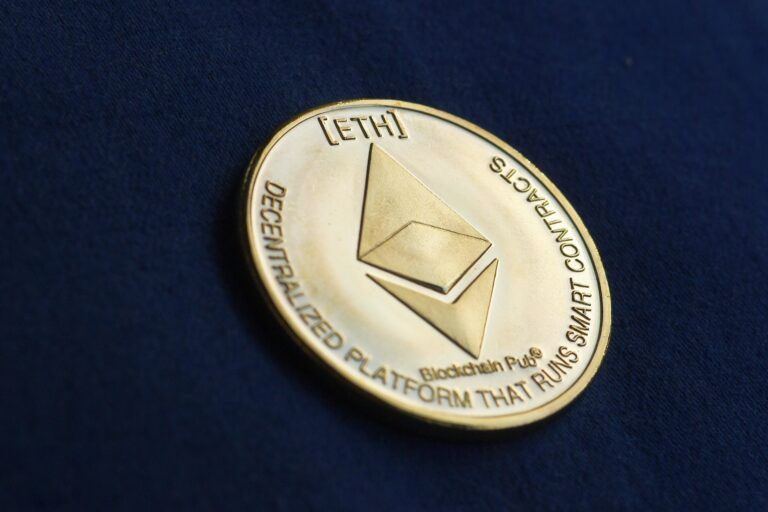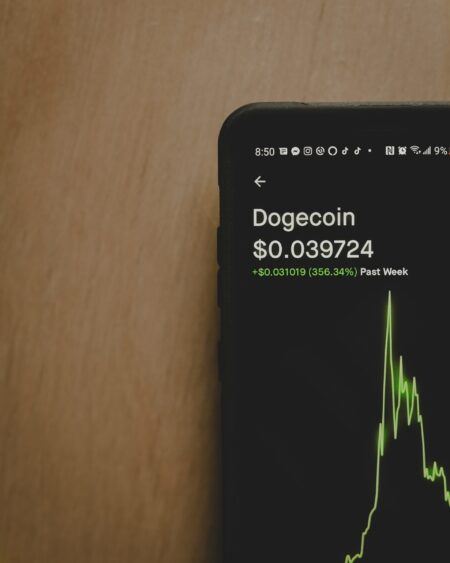In this article, we’ll first cover the key highlights from global asset manager VanEck’s “Crypto Monthly Recap for August 2024” report. Then, we’ll take a closer look at VanEck’s detailed analysis on why Ethereum (ETH) has been underperforming relative to other Layer 1 blockchains.
Key Highlights from VanEck’s August 2024 Report
According to VanEck, the broader crypto market had a tough month in August 2024. Bitcoin (BTC) dropped by 11%, Ethereum (ETH) by 24%, and Solana (SOL) by 21%, while traditional markets like the S&P 500 and Nasdaq gained 2% and 1%, respectively. VanEck also highlighted that the market capitalization of Smart Contract Platforms (SCPs) fell by 12%, indicating a significant decline in investor sentiment.
VanEck pointed to a macroeconomic event triggered by the yen carry trade as the key driver of the crypto market’s flash crash on 5 August, which saw Bitcoin briefly dip to $49k and Ethereum to $2.1k. By the end of the month, Bitcoin had rebounded to $58k, but Ethereum remained stagnant around $2.5k. VanEck also noted that Bitcoin’s volatility surged 48%, and Ethereum’s rose by 52%, showing increased market uncertainty.
Blockchain activity also took a hit, with VanEck reporting a 10% decline in daily active users, a 12% drop in fees generated, and a 4% fall in decentralized exchange (DEX) volumes. Adding to the selling pressure, VanEck highlighted the movement of 186,000 BTC to exchanges, likely for sale due to bankruptcy-related distributions and actions by U.S. and German governments.
Another factor that weighed on the market, according to VanEck, was regulatory pressure in the U.S. A Wells Notice issued by the SEC to OpenSea, one of the largest NFT platforms, raised fears of continued regulatory crackdowns, particularly if political changes, such as a Trump presidency, do not occur.
VanEck also reported controversy surrounding Wrapped Bitcoin (WBTC), particularly due to a new partnership between Bitgo and Justin Sun, which alarmed the crypto community. MakerDAO even passed a governance proposal to ban WBTC from being used as collateral for its DAI stablecoin. In response, Coinbase launched its own version of Wrapped Bitcoin (wbBTC).
Regarding Solana, VanEck noted a 21% price drop, largely driven by fraudulent activity tied to memecoins. However, Solana also saw some positive developments, including the launch of two ETFs in Brazil and the growing use of PayPal’s PYUSD stablecoin on its network. Solana’s blockchain size of 150 terabytes, however, remains a challenge, according to VanEck, as it makes storing and querying historical data expensive.
Lastly, VanEck touched on Polymarket, a decentralized prediction market that gained traction in August due to its growing popularity in political prediction markets. Despite this, concerns over potential market manipulation persist.
Ethereum’s Struggles: VanEck’s Detailed Analysis
VanEck’s report provides a deep dive into Ethereum’s ongoing underperformance compared to other Layer 1 blockchains. Ethereum’s 62% annual return since the start of the 2023 bull market is significantly lower than Bitcoin’s 138% and Solana’s eye-popping 624%. VanEck attributes this underperformance to Ethereum’s scalability issues and the rise of faster, more efficient competitors.
According to VanEck, Ethereum’s transaction throughput of around 15 transactions per second (TPS) pales in comparison to newer blockchains like Solana and Aptos, which handle thousands of TPS. Additionally, Ethereum’s sequential transaction processing creates congestion in times of high demand, limiting its usability. This slower performance, VanEck suggests, is driving developers and projects away from Ethereum and onto more advanced blockchains.
VanEck highlighted that Ethereum’s share of blockchain fees has fallen dramatically, from 86% in 2022 to just 33% in 2024. Ethereum’s dominance in decentralized exchange (DEX) volumes has also eroded, dropping from 42% to 29%. As a result, Ethereum is no longer the primary platform for speculative trading, according to VanEck, with other chains gaining ground.
While Ethereum has attempted to solve its scalability problem by moving transactions to Layer 2 blockchains (L2s), VanEck’s report points out that this solution has created new issues. Layer 2s siphon off Ethereum’s transaction fees and other value-creating mechanisms, reducing the revenue for Ethereum itself. VanEck noted that Ethereum’s share of its own ecosystem’s transaction fees (Ethereum + L2s) has dropped from 98% to 89% since 2022, showing that L2s are cannibalizing Ethereum’s economic activity.
Moreover, VanEck explained that Ethereum’s recent EIP-4844 upgrade, which created a new data lane for L2 transactions, further lowered transaction costs across the network, leading to reduced revenue. Over the past six months, VanEck observed that Ethereum’s fees have fallen by 89%, much more than Bitcoin’s 13% drop, while Tron and Solana have seen fee increases of 125% and 114%, respectively.
Compounding these problems, VanEck pointed out that several new token types within the Ethereum ecosystem, including staking and re-staking tokens, have captured roughly 11% of Ethereum’s value. These tokens present further competition, drawing value away from Ethereum and contributing to its underperformance.
VanEck’s analysis paints a clear picture of Ethereum’s struggles, highlighting scalability limitations, competition from faster blockchains, and the unintended consequences of relying on Layer 2 solutions.
Featured Image via Pixabay









